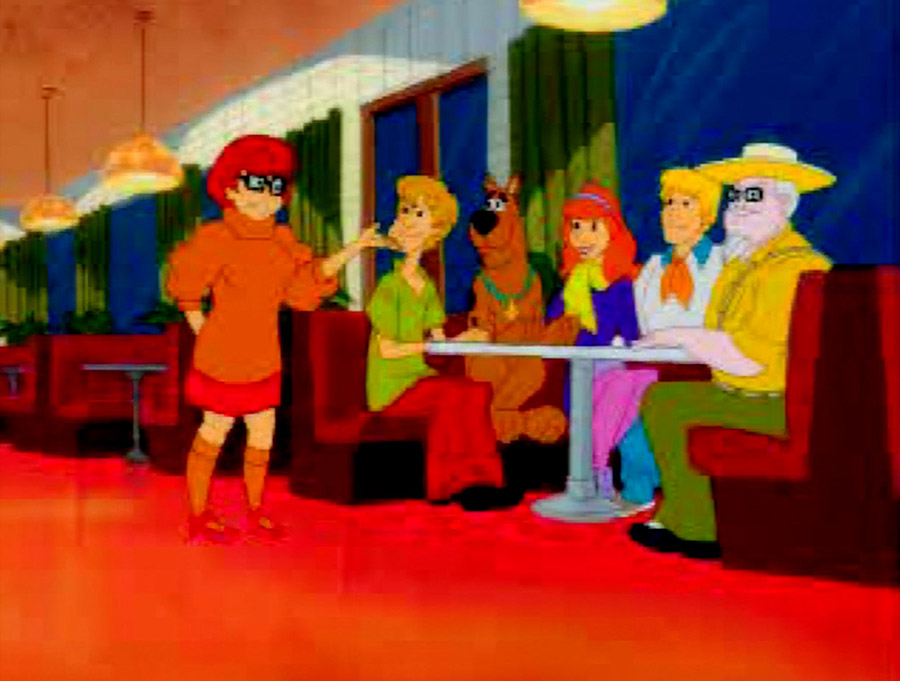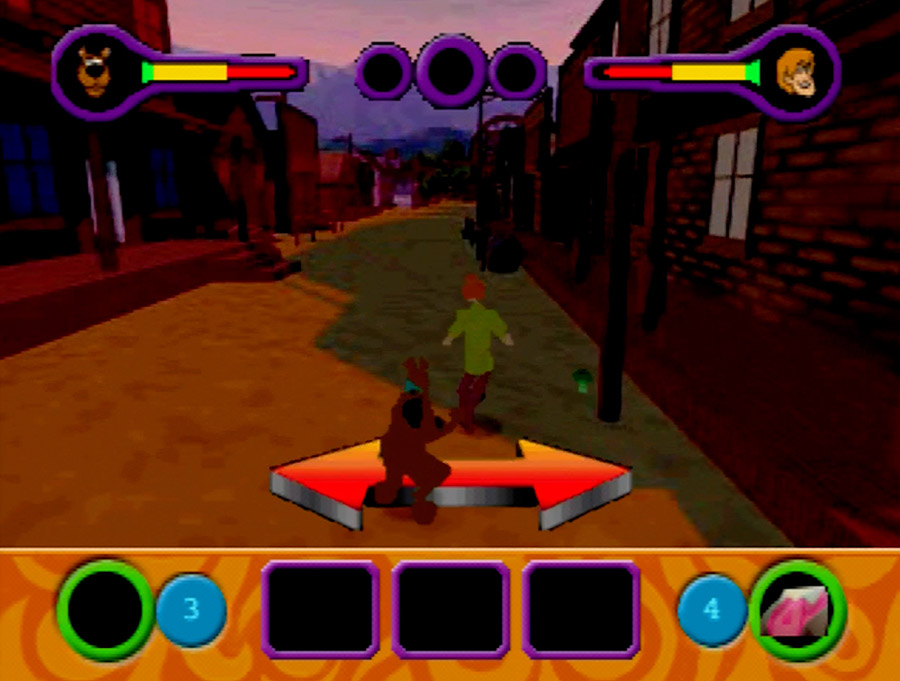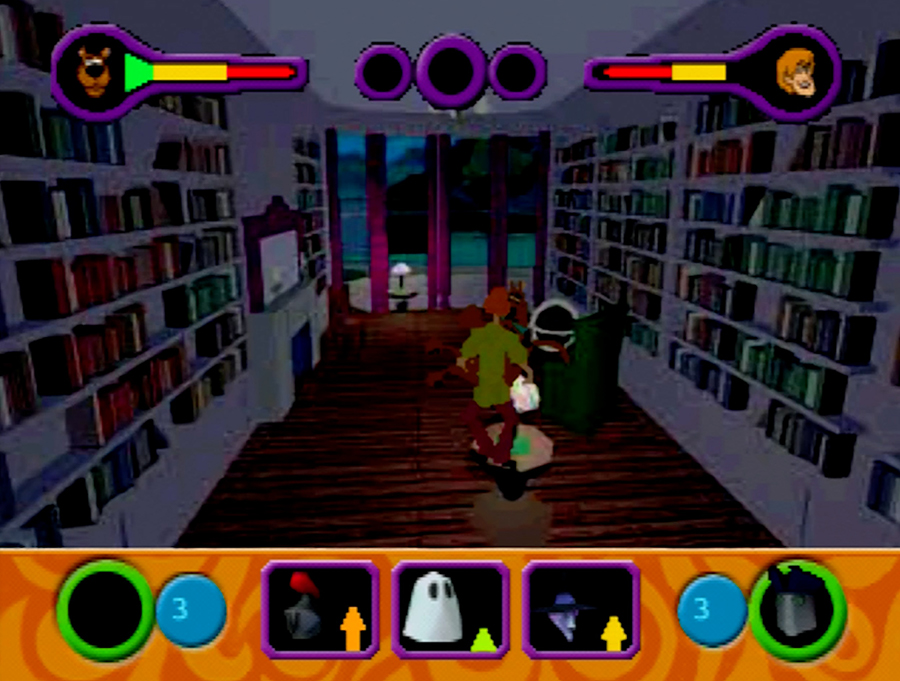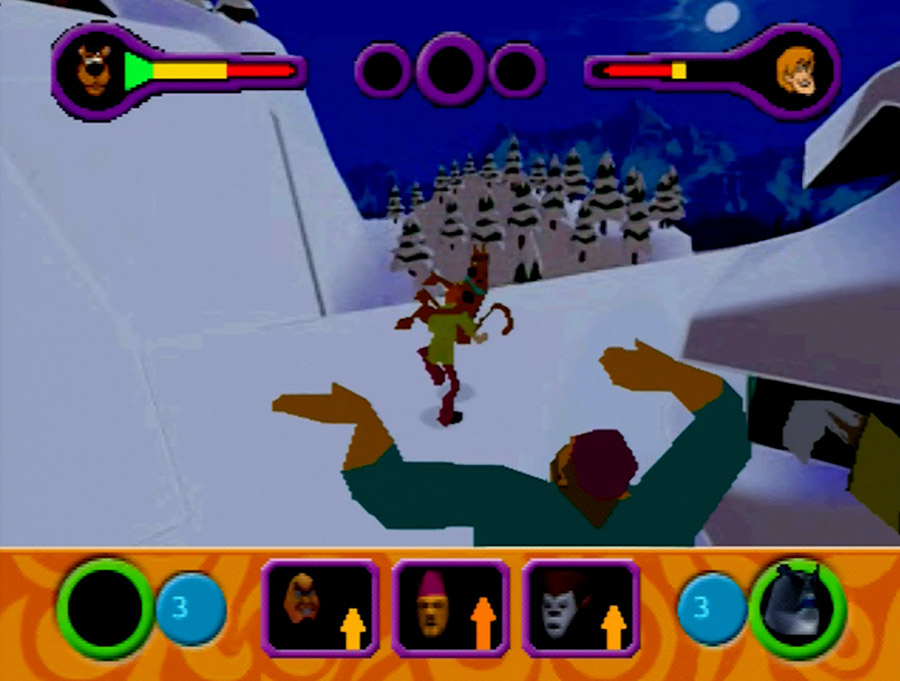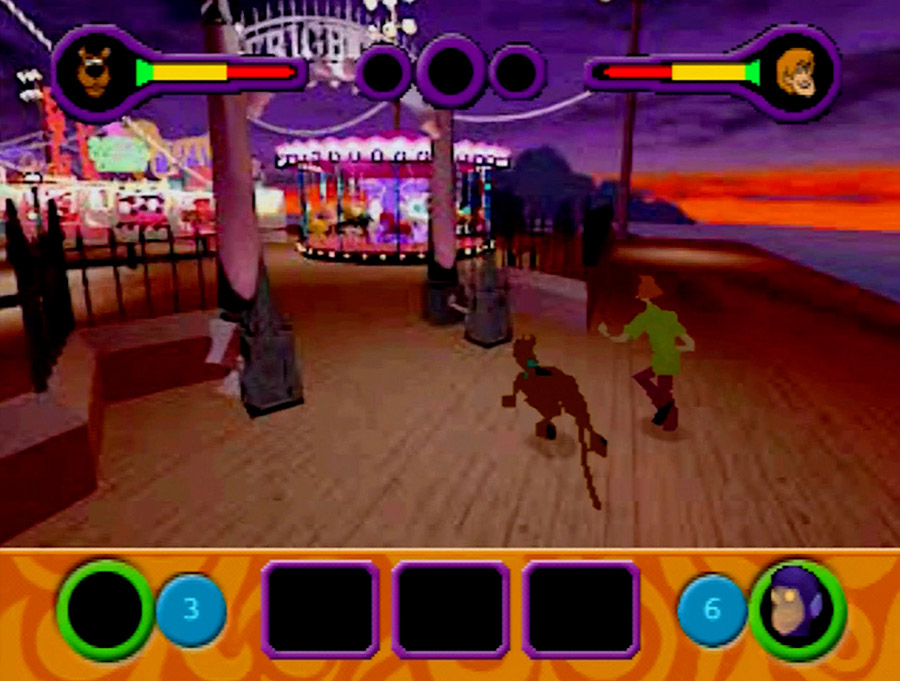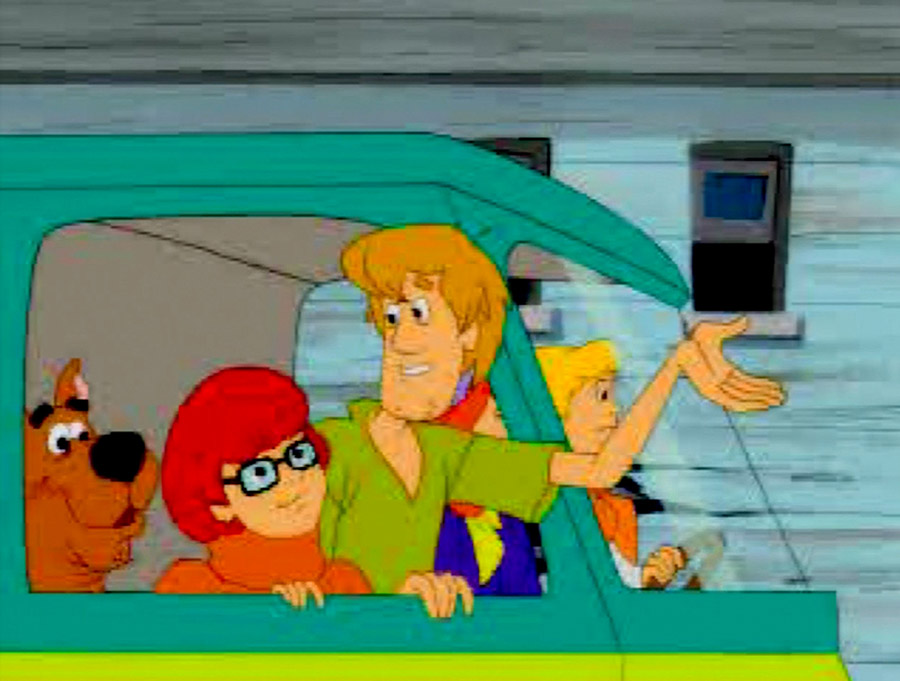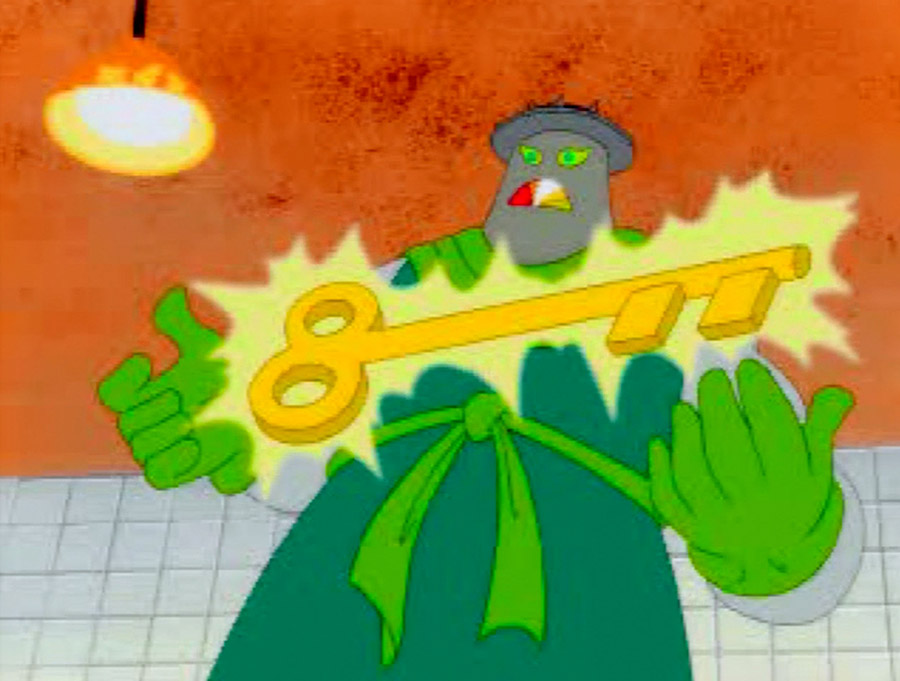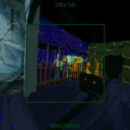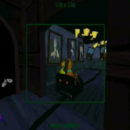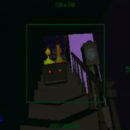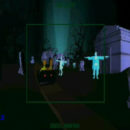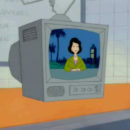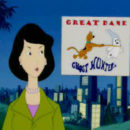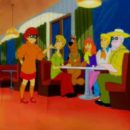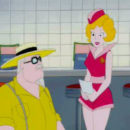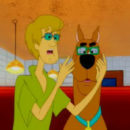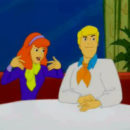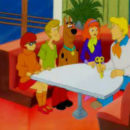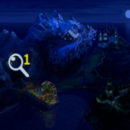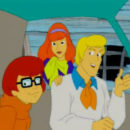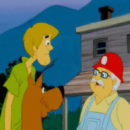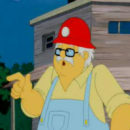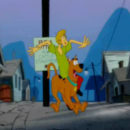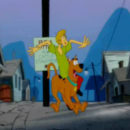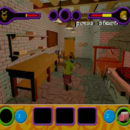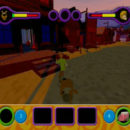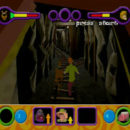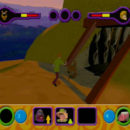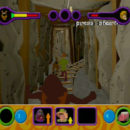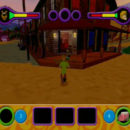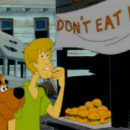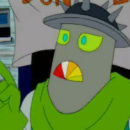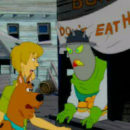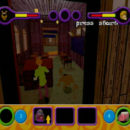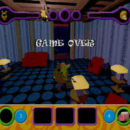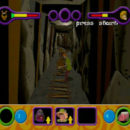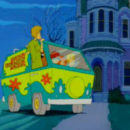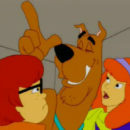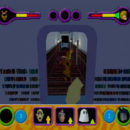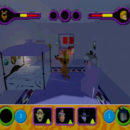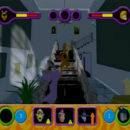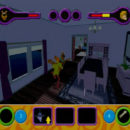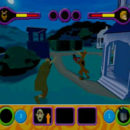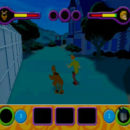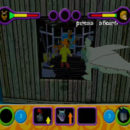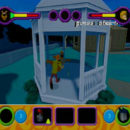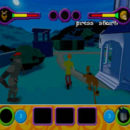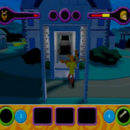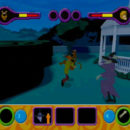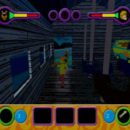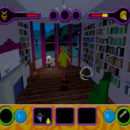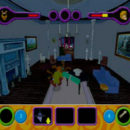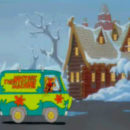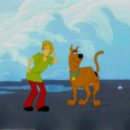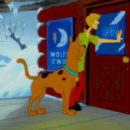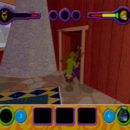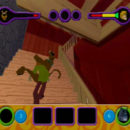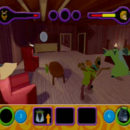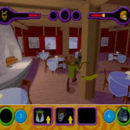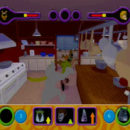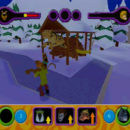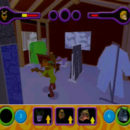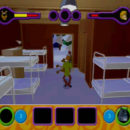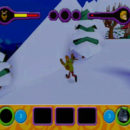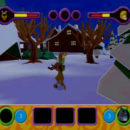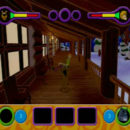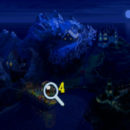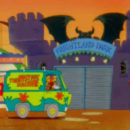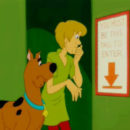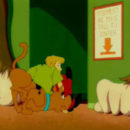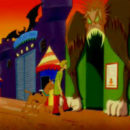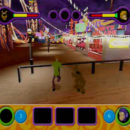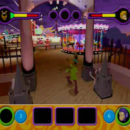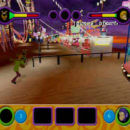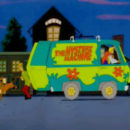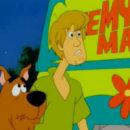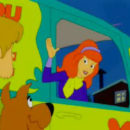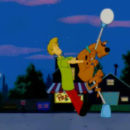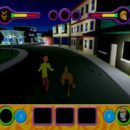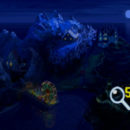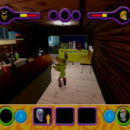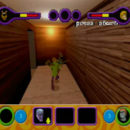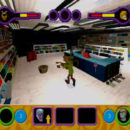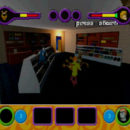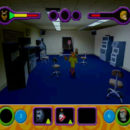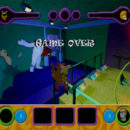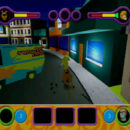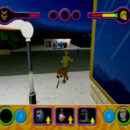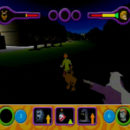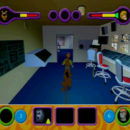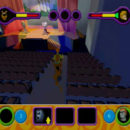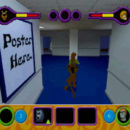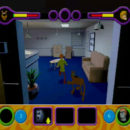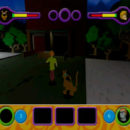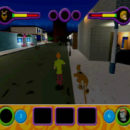10.9.2021 Update!
Friend of the site and fellow Discord user Baby Gabe has been making incredible progress in uncovering everything the Scooby-Doo Prototype has to offer, including discovering which monsters are present, available items and their locations, paths once unseen, and more. We’ve been brainstorming ways to keep uncovering secrets and the like. You can view Gabe’s document here:
Scooby Doo Prototype Progress
You can view his YouTube Channel here.
The doc links back to here and opens in a new window, so you can compare notes.
Discussion
Today in the unreleased archives comes an incredibly wonderful treat – and yes, that treat is a Scooby Snack. Game-Rave.com is proud to bring you a look into a game that quite literally only existed in a press release, until now.
Scooby Doo: Night of 100 Frights is commonly known as a PlayStation 2, Xbox, and GameCube release. However, none of that was even in the plans for the game at its initial reveal. If we go back to January 26, 2000 – THQ was extremely pleased with their licensing deal from Warner Bros. Interactive. The then 3-year deal would provide games published to and I quote “leading console platforms including those manufactured by Sony, Sega, and Nintendo.”
The initial offering was supposed to be released later that year in the fall of 2000, on the PlayStation, Nintendo 64, and Game Boy Color. Two of those three platforms were met – with Nintendo’s consoles getting Scooby Doo: Classic Creep Capers just in time for Christmas. With the PlayStation however, Scooby was nowhere to be found. With a single mention of the game’s subtitle Night of 100 Frights on THQ’s website, the link led to a public-facing empty page with a promise of something coming soon. Quietly removed from the site, it would be two years before Night of 100 Frights would resurface in the news cycle as a then next-generation software. With no mention of the original PlayStation to be found, it faded into the shadows.
And so begins the journey into the unreleased original vision of the game.
With no title screen to get stuck on, Scooby Doo drops you into the opening cinematic of the game where the premise is laid out in full. A famous TV show host named Scoop Spalding wants to bring his kind of fame and notoriety to everyone’s favorite great Dane. In the middle of the conversation, a projection appears before the team. If they can’t survive locating 12 keys while dodging their previous ghostly encounters – the show and the host are done for.
With the set-up out of the way, you’re brought to the map screen. The first area is the mining village. Another cinema is presented to explain the area, and then it’s literally off to the races. Night of 100 Frights is a Full Motion Video game in that the background is a constantly moving video clip, like Sewer Shark from the Sega CD and 3DO days. At various points in the map, players will be able to choose if they want to go left or right into a branching path, with multiple paths available.
These alternate paths are also video clips, but it’s the transition that makes it impressive. Like Sewer Shark, there’s only a momentary blip before your choice is activated, providing a fairly seamless presentation. Before I cover stages, let’s discuss the other ingenious development in the game; its controls.
If Scooby-Doo and Shaggy are controlled by a single player, they’ll manipulate both of them at the same time. The directional pad moves the duo left, and right, towards the screen and away from it. L2 and R2 will rotate the team as they run, allowing players to line them up single file in tight quarters. It also helps to switch sides so that the other character can gobble up a food power-up if they’re low on health.
The Cross Button will make Scooby jump, while Square activates Shaggy’s leap. The triangle button will have one character leap into the other’s arms, becoming a single entity. This not only helps in tight situations but will allow both characters to split health pick-ups. If one of the two runs out of said health, they’ll automatically leap into the other’s arms. Whoever is in front will leap into the other’s arms behind them.
As the two run through the game areas, they will need to jump and dodge tables, fences, and chairs, and even hop in and out of windows. All in the name of escaping their ghoulish enemies found throughout the stages. The game can be played with two players, where each controls one of the two, but it’s more interesting in single-player mode.
With level progression, the game is incomplete but the main concept can be extracted from the available gameplay. To explain, let’s get back to our first mining level. The user interface is also incomplete, but here’s what we’re working with. The color bars are Scooby and Shaggy’s health. The top center circles remain empty but were intended for found items. A single bouquet can be found on Level 5. It’s theorized these would have acted as the physical clues needed to acquire the keys.
The bottom display’s left side is an unknown entity, possibly a key counter or number of lives left. The rest of the HUD can be more easily sorted. At any given time, up to three enemies on screen can be chasing the heroes. When their square is populated, a yellow arrow shows how close they are to catching up and ending the player’s chances. If you can avoid them for long enough and make it back to the Mystery Machine, your friends will capture them or scare them off.
One can gather this from their numbers being reduced and them disappearing from the ether. Sadly, there’s no animation or anything for that matter to allude to the actual events. The Mystery Machine itself isn’t even finalized in its model or location. Or even clipping.
Successfully lapping the world will also change the featured enemy in the bottom right image. Oddly enough, either villain portraits weren’t finalized, or some of the level item icons snuck their way in. Sometimes you’ll see what looks like a bone or a magnet sitting in the frame, and not an actual bad guy.
The assumed 100 villains that would have been featured in the game don’t seem to have a pattern to their appearance. In recording the various B-roll footage, at least 3 to 4 different monsters could appear in the same location. Logic would dictate that there should have been a set number of enemies per level, but they may have been randomized on each play-through. A move like that would allow a small bit of variety since players would need to keep playing through the same loop to find all the needed items and avoid all possible enemies.
Sadly, there’s no soundtrack or even sound effects anywhere in the prototype. What is available are rough cuts of the voice recordings for the animation intermissions. Scooby is missing several lines, while the gang is at varying level gains. With the animation mistakes cataloged on the Game-Rave.com Trivia page, it’s clear they were still mapping out and fine-tuning the theatrics.
Due to the unstableness of the prototype, sadly anything can cause it to crash at a moment’s notice. Several of the more obscure path choices will always crash the game, while Stage 4’s Frightland Park sadly appears to be permanently broken. Despite there being only three enemy slots tracked, in one run I swear to you about 5 of them were on screen, making it even harder to see progression.
Woefully, the very thing that makes the game interesting is what also probably caused it to be canceled; its ambition. With the game’s premise not even realized this far into the development cycle – that being the keys – it was clear there was already too much to worry about.
A lone Clue Scroll specifically mentions a Snow Ghost character, which seems out of place in a game where it’s random monsters chasing you. Boss fights would have been possible, but unlikely. Add that to a clear lack of in-game items and the amount of development time still to tackle begins to come into clear focus.
The biggest killer though is the full-motion video itself. For the gimmick to work, an invisible layer of hitboxes has to be drawn over the full motion video and remain perfectly in sync, with both then needing to be in step with on-screen item reveals.
In playing the prototype for well over a week, it’s abundantly clear that this was the ultimate downfall of the game’s chances. Multiple times Scooby and Shaggy would trip over nothing, meaning hitboxes were in the wrong locations. Or the world would suddenly stop moving, but items wouldn’t, causing the game to crash. This is all before the proper mapping of the enemy characters, who pay no mind to anything physically present in the world. Too often the game just ends because the bad guy just appears and touches you.
So after a healthy 20 or so hours with the prototype, the question that must always be asked is, “Did we lose something of value?” If I’m being brutally honest, it wasn’t an obvious answer at first, but once several of the gameplay elements were finally realized, I can say the answer is a definite, “Yes.”
Scooby’s original incarnation at first glance is a sloppy mish-mosh of the then generally loathed Full Motion Video genre tied to some fairly poor visual pairing of polygon characters and items. But each time I made it around the track once more or discovered a new path or even hidden animations buried in the level, the game started to find its footing.
The game isn’t an action or adventure game – it’s a racing game with resource management. Your health is constantly decreasing in a world where power-ups won’t reappear after a few laps. If one of the two should lose all their health, the other must carry the team to success. It would have been a narrow victory in the retail world, but it did deserve a chance.
While you’re waiting for the file to download, check out the prototype’s page on game-rave.com. I’ve archived over 100 screenshots, two pages of trivia, the game’s original press release, and more for your enjoyment.
A huge special thanks to everyone involved with this video. I’m always honored and humbled at being able to present these new finds to the world.
Download the prototype here: https://archive.org/details/scooby-doo-night-of-100-frights-usa-proto
Screenshots
Opening Cinema
Opening Cartoon
Level 1: Major Miner’s Mining Town
Level 2: Mystic Manor
Level 3: Wolf’s End Lodge
Level 4: Frightland Park (The Level crashes after about 1 minute or less of play time.)
Level 5: Mainstreet and 2nd Street
Videos


Another YouTube Channel was able to pull all the animation videos from the ISO, and have posted them here.
Game Layout
Controls:
Scooby Doo: Night of 100 Frights is essentially a racing game disguised as an action game. Players control Scooby and Shaggy while navigating 5 levels of buildings, streets, mansions, and more. The main objective would have been tracking down 12 keys that would more than likely have unlocked a final level, or at least dethrone the game’s main villain.
If playing two players, each person controls half the duo. It’s here in single-player mode that makes things interesting. One player controls both characters, being able to rotate them, control their jumps, and have one carry the other. All of this while staying away from the various villains of your past chasing you.
In the final version of the game, Fred, Daphne, and Velma would have met you at the level’s beginning point to remove your pursuers in each new lap. None of them are present, the Mystery Machine is about half-built. The enemies will simply disappear.
D-Pad
Up: Move up / Towards the Background
Down: Move back, toward the bottom of the screen
Left / Right: Move left and right
Thumb Buttons
Cross: Scooby Doo Jumps
Circle: Nothing? Assumed to have been an item button not yet programmed
Square: Shaggy Jumps
Triangle: Causes one character to jump into the other’s arms
Select: Nothing?
Start: Pauses the game
Shoulder Buttons
L1: Nothing?
L2: Rotates the duo counter-clockwise
R1: Nothing?
R2: Rotates the duo clockwise
Selection Arrow
Every so often you will see a giant two-pointed arrow appear at the bottom of the screen. This is alerting you to the possibility of alternate paths to run to. Pressing in the direction while being on that third of the screen will trigger the path change.
It should be noted that it appears the invisible ‘trigger’ that activates this doesn’t seem to be 100% accurate, so don’t get flustered if you don’t shift paths. Some of these arrows don’t show up until it’s already past the point of turning.
In-game Items
Health Goodies
Scooby-Doo and Shaggy will automatically lose health from constantly running. Each of the health items gives back a specific amount of health to the character that picks it up. If one character is carrying the other, food items will be split between them. Many of the items are actual food products Shaggy can be seen eating in the various cartoon shows.
- Scooby Snacks (Green box/bag looking thing)
- Sub Sandwich
- Hamburger
- Banana
- Purple Lollipop
- Some sort of green container with a lid? Possibly a mushroom?
- There is a super thin item that looks like a pencil that doesn’t seem active. Might have been the Keys placeholders?
It’s important to know that these health items do not respawn after a certain amount of trips, so you would have had to plan your routes accordingly to make the most of the available food sources.
Green Scrolls
There are green scrolls that act as video clip ‘hints’ to the game’s main mystery of what happened to Scoop Spalding and who the new mysterious guest is. Running into these scrolls will trigger a cartoon clip, and then return the player to the playing field.
Unknown / Incomplete Item Collections
The 12 keys mentioned in the opening of the game are never found. It’s unclear if these would have been rewarded to you as you removed enemies from the level each lap, or if they would have been sprinkled throughout the map like the items.
Levels
On the map screen, you’ll be able to choose any of the 5 levels. Note that there doesn’t seem to be an actual way to finish a level. The game will either crash, or you will lose from a lack of health. If you get the Game Over screen, hold Start + Select + L1 + L2 + R1 + R2 to reset the game. If the game crashes (the characters stop animating, the level stops moving) you will need to do a hard reset of your hardware.
Level 1: Major Miner’s Mining Town
One of the two largest stages in the game. The main path is the dirt path street leading through the town up to and into the mine. Once you exit the mine, you’ll find yourself behind the town. The game appears to always crash right before you get back to the beginning area.
There are two known Clue Scrolls in the level; one far left right before the hill leading up to the mine, and then one that appears far left of a fence and watering pump in the back of the town.
Several sections of the mine don’t have the enemy patterns finalized, so they can sometimes instantly appear and end your game.
Level 2: Mystic Manor
Probably the most compact level in the game, but the most highly detailed. Players start outside the mansion, with the main loop taking them through the stable, shed, a gazebo, and more of the yard. An alternate path leads into the Manor itself, where the house itself is full of alternate paths.
There is a known Clue Scroll inside the manor – as you enter, press right to avoid the stairs and you’ll find it chilling in the second room just right of center in front of a small table.
The uppermost staircase inside the house had not been accessed at the time of this article. It looks like it might have led to the roof.
Level 3: Wolf’s End Lodge
The most problematic level, design-wise. Camera move takes some sharp turns, causing enemies to cover up the screen blocking your view. Many of the FMV elements don’t have their clipping boxes created, so players will end up in front of columns they should be behind. The Mystery Machine also hasn’t been fully programmed, so it appears inside the lodge rather than outside of it.
There is a Clue Scroll just as you come up out of the basement, in the last office room before you exit to the outside. It’s above the red desk chair on the right.
In the back area of the lodge is a snow path where the game will always crash, it’s the right side of the log shed.
Level 4: Frightland Park
Sadly a ‘lost asset’ in the game. Frightland Park will only last about 60 seconds and then crash. Food items appear randomly in each run. Based on the scope of the roller coaster on the far left, this might have been one of the largest areas in the game.
No Clue Scrolls here.
Level 5: Mainstreet and 2nd Street
The other super-sized level of the game, especially in terms of alternate paths. Scooby and Shaggy start on Main Street and must run their way over to 2nd Street to lose their pursuers. The amount of video footage at this level is awe-inspiring; every store you run through has various items that all had to be rendered, and the museums have tens of statues and decorations.
Several of the buildings you can run into are hidden in plain sight. You’ll pass a video rental store once before you can enter, while the TV studio building won’t light up until you activate the alternate path.
No Clue Scrolls were found.
End of the game
With no keys to be found and an incomplete Clue Scroll set, the game’s eventual ending is lost to time. Based on the way it handles clues, there more than likely wouldn’t have been a final boss level. Rather the game would just throw up a long animation sequence allowing the gang to piece together everything.
Trivia
- Scooby and Shaggy’s combined form – where one is carrying the other – is insanely glitchy. Multiple times in my recordings the two would collide and just get stuck, oftentimes in peculiar ways.
- Often the characters will trip over nothing, sometimes several times. This is more than likely hit boxes improperly mapped.
- Two of the levels contain what look like green scrolls. Running into them will cause hidden movie clips to play. They contain a little bit of humor and then gameplay hints. One of them alludes to the use of a flashlight, which doesn’t seem to have been implemented.
- The villains in the game are either glitched in their appearances or are keyed to certain events taking place. In the 1st level, there is usually a smaller red villain that appears out of a left-side house. A different run-through produced a different villain.
- In the 1st stage, right before entering the mine outside of town, there is a hilariously glitched enemy who appears to have not had their limbs programmed.
- Several enemies have no animation cycles; they’re just a 3D model moving in a provided space.
- In the 5th Level, the TV studio’s art is still unfinished. You can see picture frames that have the programmer’s note of “Poster Here” on them.
- In the Mystic Manor level, one of the rooms is left incomplete as you can see programmer notes on a wall.
- The Mystery Machine appears to move in one of the stages. It’s unclear if this was an incomplete animation cycle or a glitch in it being mapped on top of the video clip.
- Level 1’s Major Miner’s Mining Town may be a nod to the “Miner Forty-Niner” episode.
- Level 2’s Mystic Manor is an original location for the game. It would become a location in the PlayStation 2, Xbox, and Game Cube version of the game.
- Level 3’s Wolf’s End Lodge is from the TV show Scooby-Doo: Where Are You! episode That’s Snow Ghost. It also makes an appearance in other Scooby games.
- Level 4’s Frightland Park appears to have been made for the game.
- Level 5’s Main Street concept appears to have been repurposed for the follow-up game Cyber Chase. Both feature shop fronts and things to avoid in the street.
- Level 5 is the only level where Scooby and Shaggy leave the van of their own free will.
- Level 5 has a serious visual glitch in the museum building that almost always causes the game to lock up.
- Animation Issues – Opening Roller Coaster Cinematic
- This is fairly cool as it appears to be an in-progress, low-resolution temporary video. 320 x 240 is half the ratio of PlayStation’s standard interlaced feed. The green square appears to illustrate what would be on-screen to the viewer, with a 3D location tool in the lower left. Note that in the immediate first few seconds, you can see the background roller coaster isn’t fully rendered – and doesn’t need to be – as it’s never fully in (the green) frame.
- The numbers 1 and 55 appear just after the halfway point, possibly being markers for objects not yet rendered in the video.
- Animation Issues – Opening Cartoon Intro
- The size of the key keeps changing between cuts, sometimes drastically.
- There is no flower on the waitress’ outfit. It only appears after Scoop sneezes.
- Scooby and Shaggy put on glasses, but then the glasses are never seen again.
- Animation Issues – Level 1
- When the camera cuts into the van, there is no dashboard or steering column. Daphne is either outside the van looking in or has been severed in half inside. 🙂
- Re-uses the ‘kick-out’ animation cycle from the amusement park (note the background).
- Hidden Scroll Sequence (Left side of the screen) – For a single frame you see the “END” card of that part of the animation cycle.
- In the second scroll scene where you have the stampede, nothing happens to Scooby or Shaggy. However, the numbers in the bottom display shift left, implying there might have been an item given.
- Animation Issues – Level 2
- When the two are ejected from the van and stand up, Shaggy is standing next to the real-world edge of the background artwork.
- They then walk into Level 3’s Wolf’s End Lodge – a recycled sequence from Level 3.
- Animation Issues – Level 3
- No wheel spin animation on the Mystery Machine
- As Fred talks, there is no back of the van
- Recycled ‘no dashboard/steering wheel’ sequence from Level 1.
- Re-uses the ‘kick-out’ animation cycle from the amusement park (note the background)
- Shaggy goes to open the door and proceeds to open nothing and walk right through the door with Scooby.
- Animation Issues – Level 4
- Aside from the recycled ‘missing steering wheel’ sequence, this looks okay.
- Animation Issues – Level 5
- Mystery Machine’s wheels are not animated.
- Unused Clues
- In the opening cartoon, the villain tells you that you’ll need to hunt down 13 keys to find him. In all my play-throughs, I never found a single key.
- In Level 1’s intro cartoon, Major Miner alludes to the in-level mine possibly “driving us batty”. There are no bats in the mine as far as I can tell.
- The first Scroll animation in Level 1’s Hint says that you “should shed a little light on the situation”. There are black sections of the mine, implying you might have had to use a flashlight to progress through it.
- Level 2’s clue more or less confirms Scoop Spalding as the villain as it makes a flower reference – “Blooming”. This references his allergy in the opening cartoon.
- In Level 3’s Lodge, a clue says that it’s nothing to sneeze at. More than likely referencing Scoop Spalding’s sneeze in the cartoon opening. There might have been a flower you’d have to find.
- Level 3 has a second Clue Scroll that appears at the beginning of the stage, but only if you pick the last left turn of the level. Shaggy and Scooby run into a creepy caretaker who gives a clue about a specific enemy, the Snow Ghost.
- Items Found
- In the 5th stage, from the very beginning, if you haul ass to the left and walk on the grass of the roundabout, what looks like the villain’s hand pops up and you are rewarded with what looks like a flower bouquet.
The Official Press Release for the license acquisition:
THQ SECURES SCOOBY-DOO! LICENSE, SIGNS FOUR-YEAR LICENSING AGREEMENT WITH WARNER BROS. INTERACTIVE ENTERTAINMENT
THQ Announces Plans to Develop Video Games Starring World Famous Scooby-Doo! Characters
CALABASAS HILLS, Calif., – January 26, 2000 – Game publisher THQ Inc. (NASDAQ NMS: THQI) today announced an agreement with Warner Bros. Interactive Entertainment naming THQ as the worldwide video game licensee of the Scooby-Doo! property through December 2003. The worldwide agreement grants THQ rights to feature Scooby-Doo, one of the most beloved TV characters of all time, in games for leading console platforms including those manufactured by Sony, Sega and Nintendo. THQ’s first Scooby-Doo games are scheduled for worldwide release in the fall of 2000.
“Through the Scooby-Doo cartoon series that has spanned over thirty years and recent Home Video releases, Scooby-Doo has established itself as a worldwide household name for several generations,” stated Germaine Gioia, vice president of licensing, THQ. “We are very excited to be working with Warner Bros. on a product that lends itself so naturally to a 3D interactive adventure.”
Since its debut in 1969, Scooby-Doo has run over 300 episodes and captivated fans worldwide earning, a 93% familiarity rating from kids to adults, ages 6-34. The October ’99 Scooby-Doo marathon enjoyed an audience of 14 million viewers, up 19% from last year’s marathon. As we enter the new millennium, the Scooby-Doo television series continues to air exclusively on the Cartoon Network, which is viewed in 128 million homes worldwide. Scooby-Doo Warner Home Video releases remain top-performers at retail with over 6 million videos sold to date.
New plans for Scooby-Doo in 2000 include two new Home Video releases and the first Scooby-Doo DVD release. Scholastic will continue to release new chapter books every two months throughout 2000 and Golden Books will release their all-new line of coloring and activity books this summer. More information about Scooby and the gang can be found at www.Scooby.CartoonNetwork.com.
THQ’s Scooby-Doo adventures for PlayStation, Nintendo 64 and Game Boy Color are scheduled for release in fall of 2000. For more information on Scooby-Doo games and the rest of THQ’s exciting product line, please visit www.thq.com.
THQ Inc. develops, publishes and distributes interactive entertainment software worldwide for a variety of hardware platforms including PC CD-ROM, and those manufactured by Sega, Nintendo and Sony. The THQ Web site is located at www.thq.com.
# # #








